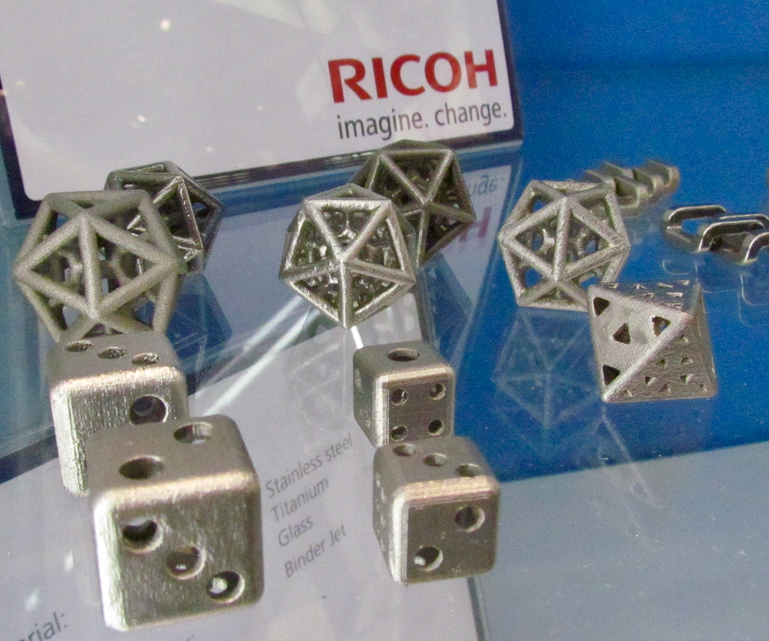
While Ricoh has been selling their SLS-based 3D printer for over a year, they’re now beginning to move into a very different 3D printing technology.
Ricoh’s initial industrial 3D printer was the AM S5500P, a powder-bed fusion system (SLS) including a very large print volume.
But now it seems that the company is developing an inkjet-style 3D printer that is reminiscent of the PolyJet technology used by Stratasys. They’re exploring metal printing with a new process and binders.
At this point it is the beginning of their development cycle and they’ve only produced “early prototypes”.

Nevertheless, the sample prints we saw appeared quite impressive.
Metal prints are presumably sintered post-printing to remove binder and form the final metal object.
Along with metals, Ricoh’s new process can also 3D print other materials such as glass and ceramics.
Introducing an entirely new 3D printing process would be a daunting task for many companies who often struggle developing just one process. However, with the size and scale of Ricoh, it is quite possible to allocate sufficient resources to any number of projects to create new, reliable 3D printing processes.
This just shows that the existing 3D printing giants, including Stratasys and 3D Systems, may have something to worry about: new entrants like Ricoh, HP and others are enormously larger than any existing players and can easily outspend any current research and development programs.

